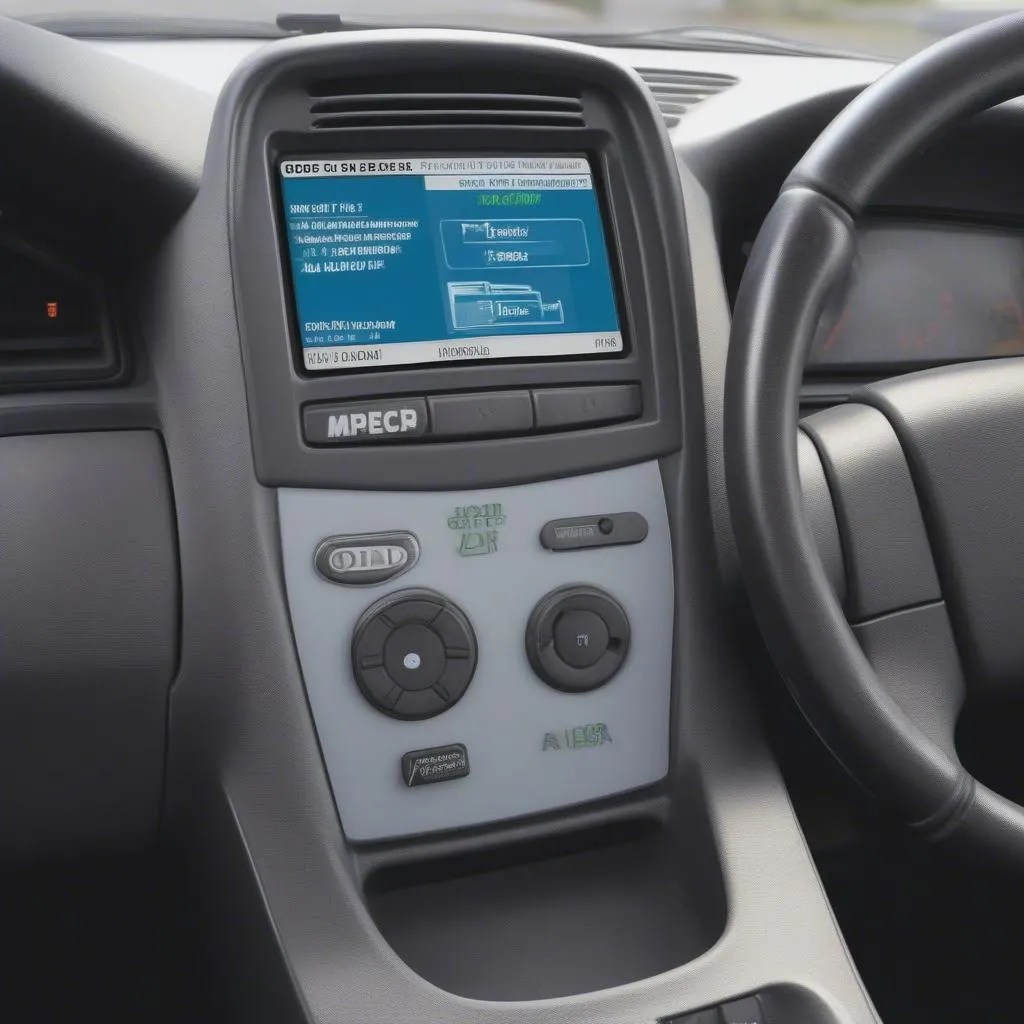If you’re experiencing issues with the anti-theft system on your 2002 Mercury Cougar, you’re not alone. This is a common problem that many Cougar owners face. Luckily, there are a few things you can try to fix it yourself.
Understanding Your Cougar’s Anti-Theft System
Before diving into troubleshooting, it’s helpful to understand how the system works. The 2002 Mercury Cougar uses a Passive Anti-Theft System (PATS). This system relies on a transponder chip embedded in your key. When you insert your key, the system reads the chip’s code. If the code matches what the car’s computer expects, the engine is allowed to start. Problems arise when the system can’t read the chip or the code is incorrect.
Common Symptoms of Anti-Theft System Issues
Identifying the problem is the first step to fixing it. Here are some common signs of a faulty anti-theft system:
- The engine cranks but won’t start. This is the most common symptom. You might hear the engine turning over, but it won’t fire up.
- The “Theft” or “Security” light is flashing on the dashboard. This is a clear indicator that the anti-theft system has detected a problem.
- You’re unable to lock or unlock the doors with your key fob. In some cases, a malfunctioning anti-theft system can interfere with the remote keyless entry system.
Tools and Equipment
You won’t need a mechanic’s tool chest to address basic anti-theft system problems. Often, a few simple items will suffice:
- Spare Key: Having a spare key, especially the original, can be a lifesaver.
- OBD Code Reader: This tool reads diagnostic trouble codes from your car’s computer and can pinpoint the issue.
 OBD Code Reader for Diagnosing Car Issues
OBD Code Reader for Diagnosing Car Issues
Troubleshooting Steps
Let’s look at how you can resolve these issues:
-
Check Your Key: Try both your regular key and your spare. Sometimes, the transponder chip in the key can become damaged or worn, preventing the PATS system from reading it.
-
Inspect the Battery: A weak key fob battery can also cause issues. Replace it with a fresh one to eliminate this possibility.
-
Check for Error Codes: Connect your OBD code reader to the diagnostic port under your dashboard. Read any stored codes related to the anti-theft system. Common codes include B1221 (invalid key code) or B1351 (PATS transceiver signal fault).
 Identifying the PATS Module in a 2002 Mercury Cougar
Identifying the PATS Module in a 2002 Mercury Cougar
-
Inspect the PATS Module: The PATS module is responsible for communicating with your key. If you have persistent issues and are comfortable with basic automotive wiring, check the connections to the module. Look for loose, corroded, or damaged wires.
-
Seek Professional Help: If you’ve exhausted these steps and are still unable to fix the problem, it’s best to consult with a qualified automotive electrician or take your Cougar to a dealership. They have the expertise and specialized tools to diagnose and repair complex anti-theft system issues.
Frequently Asked Questions
Q: Can I bypass the anti-theft system on my 2002 Mercury Cougar?
A: While bypassing the system is technically possible, it is highly discouraged. Doing so compromises your vehicle’s security and could even be illegal in some areas.
Q: Can I program a new key myself?
A: Programming a new key to your Cougar’s PATS system typically requires specialized equipment and knowledge. It’s generally recommended to have this done by a dealership or a qualified locksmith.
Q: Are there any aftermarket anti-theft systems compatible with the 2002 Cougar?
A: Yes, there are aftermarket options available. However, it’s important to choose a system specifically designed for your Cougar’s make and model to ensure compatibility.
Q: Can software like Cardiagtech help me diagnose anti-theft system issues?
A: Diagnostic software, such as those offered by Cardiagtech, can be invaluable in reading and understanding error codes from your vehicle’s computer. While it can pinpoint the problem, physical inspection and repair may still be necessary.
While this guide offers some basic steps, remember that working on automotive electrical systems can be complex. If you’re uncertain about any procedure, it’s always best to err on the side of caution and consult a professional. For more in-depth assistance and expert advice on automotive diagnostics and repairs, connect with CARDIAGTECH.
